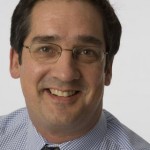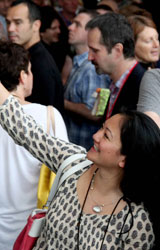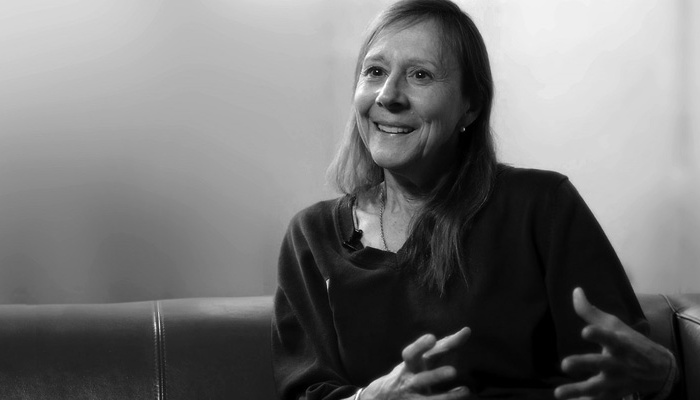The Way to Wellville and Other Places with Esther Dyson
Can you imagine for a moment you are living in a community in the United States where everyone is getting enough healthy food, exercising regularly, getting enough sleep, living with less stress and leading a healthy and productive life? Can you see them working with their families, friends and businesses in order to sustain a better way of life for all? Is this a fairytale and a mythical land? Wouldn’t we all want this as a goal for our families, friends and the communities we live in?
Esther Dyson is always in search of more meaningful problems to solve. She is a well-known angel investor, entrepreneur, philanthropist, cosmonaut and investor in numerous tech enterprises. But her latest venture, the Health Initiative Coordinating Council (HICCup.co), is a nonprofit she founded herself. She has taken on the health and wellness challenge in the hope that implementing well-known approaches to health at “critical density” – rather than elusive miracle cures – will result in an effective demonstration of their value. And that, she hopes, will inspire other communities “to steal our ideas and spread them.”
Dyson, one of the most influential women in the tech industry, has turned her attention to improving “health, not health care,” and during her TEDxNavesink 2015: Accelerator talk will discuss HICCup’s five-year, five-community initiative called “The Way to Wellville,” in which communities will work with support from her and her team led by CEO Rick Brush to improve the overall population’s health, and to make at least some of the projects into investment-worthy propositions.
The five communities were picked from 42 US communities of under 100,000 people who applied to HICCup last spring. HICCup will help them to accelerate their own plans for producing health; you could consider it a multi-location on-site accelerator. Like an accelerator, it does not invest, but it does help its members with access to experts, investors, partners and the like. And it helps the community develop programs and leadership that would attract outside capital.
Treating illness and poor health after the fact is expensive, which is why in the United States we spend about 17 percent of Gross Domestic Product (GDP) on healthcare and the repair of our health. Lowering rates of the most common chronic diseases—like diabetes, heart disease, hypertension and stroke—can save money and prevent suffering. But doing that requires policy change, behavior change and often financial “change” by parents and children, food producers and retailers, mayors and school principals, doctors and nurses, insurance and healthcare executives, employers and charities. Change at any level is daunting, especially when it involves so many people and systems and so many competing interests.
The bottom line is that Dyson hopes to solve this big problem by starting small. And she is doing something new simply by focusing on a set of mostly old approaches - nutrition, exercise, more attentive preventive care – but at critical density in five small communities where critical density can most easily be achieved. The primary “techy” aspect of the project is fanatic attention to data collection and analysis, and to measuring outcomes. Overall, Dyson says, HICCup is playing the role of an accelerator for local initiatives, “not of a nice white lady from New York telling people how to live.”
When it’s all over Dyson hopes that, “the state of American health—and not just the healthcare system—will show visible change that inspires people, as well as useful scientific data” that can be broadly shared.
The question is whether such a diverse group of at least five coalitions can be sustained. Can an effort that aims to include for-profit health insurers and giant food corporations, along with five community organizations and public health advocates and social impact investors and healthcare providers, find sufficient common ground in their mutual desire to foster health?
Says Dyson: They do not all need a desire to foster health. The food companies want to make money. Community organizations have a variety of goals, including increased employment. Health insurers want to make money and should be able to if they increase health and lower costs, rather than – as happens currently – be forced to give most of their improvements back in the form of lowered premiums. Politicians want re-election, while government and healthcare workers mostly want to do a good job that makes sense – and would love to deliver better service at lower cost and see their jobs expand. Social-impact investors want to make money, but by investing in projects that have a positive impact over time.
So . . . they all have diverse interests, and our mission is to create business models that incentivize each of them to produce health even though that may not be the primary goal of most of them. With Dyson’s and HICCup’s help and guidance, that’s the concept five American communities will be testing over the next five years.
Her talk on the topic of accelerating the production of health and the way to Wellville will be at TEDxNavesink 2015: Accelerators on April 11 at Monmouth University. Esther will start the ball rolling-downhill with an overview of acceleration in the tech world. Then she’ll leave tech behind and talk about a different form of acceleration—how “The Way to Wellville Challenge” is helping five small communities accelerate their own journeys to health, not by inventing new wheels but by reassembling the spokes of a very old wheel, healthy living, and making it turn.
If you want to learn more about Dyson’s vision to transform and accelerate the production of health-as opposed to the business of health repair and learn how you can get your community on the way to Wellville then buy a ticket for TEDxNavesink today!
 John Ridgeway is a Digital Strategist and Social Media Junkie currently working with Naviscent a digital agency based in Silicon Valley, California consulting with global brands conducting customer centric research, design and engineering digital platforms that improve a the customer experience, social engagement and the bottom-line for Fortune 500 companies. John, his wife Donna and their family have resided in the wonderful small community of Fair Haven, New Jersey for over 25 years on the ever changing Navesink River and have enjoyed every minute.
John Ridgeway is a Digital Strategist and Social Media Junkie currently working with Naviscent a digital agency based in Silicon Valley, California consulting with global brands conducting customer centric research, design and engineering digital platforms that improve a the customer experience, social engagement and the bottom-line for Fortune 500 companies. John, his wife Donna and their family have resided in the wonderful small community of Fair Haven, New Jersey for over 25 years on the ever changing Navesink River and have enjoyed every minute.

- Learn about new TEDxNavesink Events
- Discover local change-makers
- Get fresh content from our blog


